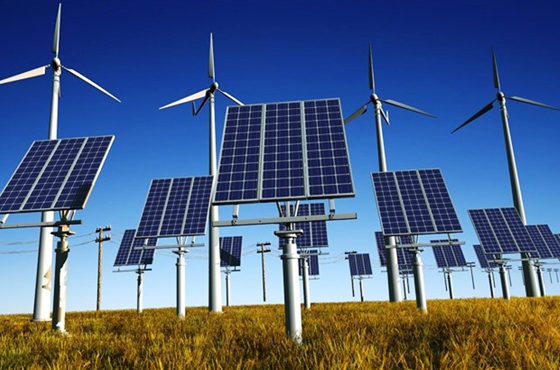The expansion of Jordan’s renewable energy segment has seen a marked acceleration in recent years, with nearly 1000 MW of solar and wind projects currently being implemented.
These developments dovetail with a national strategy aimed at raising the share of renewables in the energy mix to 10% by 2020, equivalent to a generating capacity of some 1500 MW.
Giving the green light
Development of renewable energy sources has become increasingly critical for Jordan in recent years, as fuel oil imports and electricity subsidies have led to financial losses for the state-owned National Electric Power Company (NEPCO).
Jordan has historically imported around 97% of its energy needs at a cost of close to 18% of GDP, according to figures from the Ministry of Energy and Mineral Resources (MEMR).
Central to the kingdom’s efforts is the Green Corridor project, which is aimed at reducing dependence on hydrocarbons by increasing Jordan’s ability to absorb the loads generated by new renewable energy capacity stemming from wind and solar.
The upgrades involve the construction of two new transmission lines – a 400-KV, 150-km line and a 132-KV, 51-km line – as well as upgrades to three existing 132-KV lines stretching 100 km each.
Additionally, a new 1200-MVA electricity substation will be constructed in northern Ma’an, while the stations at Qatraneh and Queen Alia International Airport will also be expanded, according to local media reports.
Last year saw the $159.7m multi-component project awarded key funding.
Development is being co-financed by the French Development Agency, which has issued a $54.9m soft loan; the European Investment Bank, which is providing $72m worth of project finance; NEPCO, which has contributed $12.6m in funding; and the EU Neighbourhood Investment Facility, which has offered a grant of $20.2m.
While tendering for the construction was delayed at the beginning of the year, the project is slated for completion in 2018.
PV potential
The Green Corridor investments are specifically designed to reinforce the nation’s electricity network in the deserts in the centre of the country, which are ideal for the use of solar generators.
Solar power is seen as a sustainable option for Jordan’s long-term energy security, as the country boasts about 330 sunny days per year.
According to Samer Zawaydeh, a Jordan-based engineering consultant, the bulk of the solar photovoltaic (PV) farms currently under construction, totalling around 200 MW, are located in and around Ma’an, whereas the majority of consumption stems from the capital Amman, he told industry press.
Ma’an is close to the 52.5-MW solar PV Shams Ma’an power plant, which will be the largest solar PV facility in the country when it opens later this year.
In April a $148m wind power project was also inaugurated in Ma’an and is expected to generate 200GWh annually, according to local press reports.
Solar project pipeline
To unlock the country’s renewable energy potential, the government signed a number of solar and wind agreements in June 2015, which are expected to be operational by 2018.
“By 2018, electricity generated by renewable energy projects will reach about 1000 MW,” Haidar Gammaz, spokesperson for the MEMR, told local media last year.
Importantly, these initiatives have provided an opening for foreign investment in the renewables segment.
In January Masdar, an Abu Dhabi-based renewables developer wholly owned by Mubadala Development Company, announced it had signed an agreement to invest $300m in a 200-MW solar project, marking the company’s second renewables project in the kingdom.
According to Ahmad Belhoul, Masdar’s CEO, changing price dynamics have made renewable energy projects more promising.
“Prices of solar PV are down by 60-70% in the last six years, [while] prices of wind power projects have also dropped. And with changing government policies, the economic case for renewables is clear,” he told media earlier this year.
Another Abu Dhabi-based player, Enviromena Power Systems, won a $128m joint deal with Spanish engineering firm TSK Group in December to build a 103-MW solar PV power plant in Al Quweira in Jordan’s southern region, according to press reports.
Development of the Al Quweira plant, which is being funded by Jordan’s MEMR through a grant from the Abu Dhabi Fund for Development, is intended to help the country achieve its target of 600 MW of solar and wind power by the end of this year.
According to Sami Khoreivi, CEO of Enviromena, lower energy prices are spurring on regional investment in renewables.
"There is a massive increase in solar power installations in the MENA region,” he told international press in January. “This year we will see 10 times more contracts than last year.”
Oxford Business Group
10 July























































